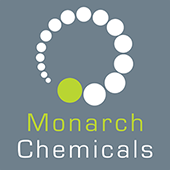Hypochlorous Acid was first identified back in 1811 as what the body produces to fight infection by the celebrated chemist Sir Humphry Davy (inventor of the Davy Miners Lamp and discoverer of several chemical elements). His student, Michael Faraday, then took over the work and managed to isolate and produce Hypochlorous Acid (HOCl) by electrolysis, passing current through brine solution in 1823.
It then wasn’t until the First World War in 1914 that it took a practical turn to help medics treating field wounds. HOCl was used to irrigate the wounds where it was noted soldiers healed in half the time as those who didn’t have the same opportunity.
Fast forward to today and we now see Hypochlorous Acid ,HOCl, produced on a mass scale with stability issues a thing of the past. Previously HOCl solution would only be stable for around 1-2 hours before turning back into salt-water, however, new technology has helped develop HOCl with a shelf-life of up to 24 months with nothing new added – just improved stabilisation during the manufacturing process.
How does hypochlorous acid work?
In the body, white blood cells (neutrophils) produce hypochlorous acid as part of the human immune / defence system. These neutrophils seek out invasive pathogens like bacteria and viruses and destroy them using hypochlorous acid, binding with the unsaturated lipid layer and disrupting the cellular integrity.
Commercially produced HOCl works in exactly the same way, offering maximal antimicrobial properties across all surfaces. HOCl is a powerful oxidising agent, killing a vast spectrum of bacteria, viruses and spores by destroying the cell membranes and proteins.
Is hypochlorous acid safe?
Hypochlorous acid is the perfect disinfectant, not only for its incredible kill rate across a broad spectrum of pathogens but also because unlike other products in the chlorine family, such as sodium hypochlorite (bleach), it carries zero warnings and is classed as non-hazardous. It can be safely used to sanitise surfaces and hands, clean wounds and wash fruit and vegetables.
HOCl has no C.O.S.H.H (Control of Substances Hazardous to Health) requirements for storage, handling or disposal and has no detrimental effect on the environment.
Can hypochlorous acid be used as hand sanitiser?
Yes, hypochlorous acid is formulated to the same pH as your skin and is the ideal instant hand sanitiser. It has no degreasing effect on the skin, does not sting, irritate or crack the hands when applied and is capable of killing a broad spectrum of bacteria, viruses and spores.
Can hypochlorous acid be fogged?
Yes, Hypochlorous Acid is the perfect fogging solution offering maximal protection against a broad spectrum of pathogens. It is non-corrosive, non-flammable, contains no alcohol and has no irritancy. It is also approximately 100x more effective than bleach providing a fast-action sporicidal sanitiser, suitable for use on a wide range of materials.
What is the difference between hypochlorous acid and sodium hypochlorite?
Although both belong to the chlorine family, they are two very different products. Sodium Hypochlorite, chemical formula NaClO, is highly alkaline and therefore irritating and corrosive to the skin, lungs and eyes and must be handled and disposed of with great care. Hypochlorous Acid, formula HOCl, however, is a weak acid, formulated to be near physiological pH (pH 7) which is the same pH level as the human body. It is not corrosive or irritating and requires no special handling or disposal requirements yet is 100x more effective than sodium hypochlorite.
Why is hypochlorous acid not more mainstream?
It is actually more mainstream than you think. In fact, hypochlorous acid is used widely around the world in a variety of industries from food processing plants to water treatment and is used extensively in the medical arena. When the COVID-19 Coronavirus outbreak happened, countries were quick to adopt hypochlorous acid as their disinfection chemical of choice. It was (and still is) fogged on public transport, in hospitals and schools. Streets were sprayed down and ‘disinfection tunnels’ were installed where people simply walk through a mist of HOCl to instantly disinfect their clothing.
As sanitisers, fogging and disinfection have now become an inherent part of daily life, we only see hypocholous acid (HOCl) being adopted more widely throughout the world as the benchmark for rapid, effective and sustainable sanitisation.


